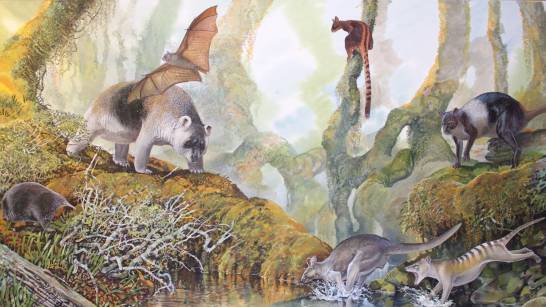Australian paleontologists Flinders UniversityIsaac Kerr and Gavin J. Prideaux, discovered a new type of kangaroo prehistoric giant coming from central mountains Papua New Guinea. The specialists they believe it could only be found there.
O first fossils of these animals have 20,000 and 50,000 years ancient and coming from the rock shelter of Nombe, archaeological site in the province of Chimbu.
This site is home to “two families of megafauna marsupials in prehistoric New Guinea, the Macropodidae (kangaroos and kangaroos) and Diprotodontidae (giant quadrupedal herbivores),” Isaac Kerr, first author of the discovery, tells SINC.
O searchpublished in Royal Society of South Australia Transactionscollects the name given to the animal in honor of the place of its discovery: name name. The researchers plan to return to Papua New Guinea for more excavations and research in the next year.
A new species for Papua’s past fauna
Big and muscular, the Nombe lived in a tropical jungle in the mountains. In this habitat it had to evolve to be able to eat the hard leaves of trees and shrubs, acquiring a thick jaw and strong chewing muscles.
using 3D images and other technologies, researchers studied the remains of the Papua Museum and Art Gallery. The samples lead them to think that this giant kangaroo comes from a lineage of ancestors that spread across the country in the late 19th century. Mioceneabout 5-8 million years ago.
Isaac Kerr with an Australian kangaroo jaw and an Australian megafauna fossil jaw used in the latest study. /Flinders University
“The discovery suggests, on the one hand, that there is greater diversity of these marsupials than previously thought, and, on the other hand, that the New Guinea fossils are not closely related to modern Australian great kangaroos,” says Kerr.
At that time, the islands of New Guinea and mainland Australia were connected by a ‘land bridge’ thanks to the low sea level, which allowed first australian mammals moved to the rainforests of New Guinea.
However, when the Torres Strait flooded, these animal populations were alienated from their Australian relatives, so they continued different evolutionary processes. The Nombe is believed to have descended from one of those ancient lineages of kangaroos that had to adapt to their new habitat.
Reviving interest in New Guinea paleontology
Although between the 1960s and 1980s American and Australian researchers made several discoveries of extinct megafauna in the area, paleontological excavations stopped in the 1990s, a situation that researchers at Flinders University intend to remedy.
Gavin Prideaux, co-author of the paper, says the research will be expanded thanks to a grant from the Pacific and Australian Science Foundation. “We are very excited to be able to carry out three excavations at two different sites in Papua in the coming years. We hope to wake up Local interest in New Guinea paleontology”.
Up until the reasons are unknown why the Nombe and other megafauna species disappeared and how they did it. At the moment, there is no direct evidence to show that early humans hunted these animals 50,000 years ago.
“Currently, there are so few fossils that we cannot be sure when they went extinct, whether it was all at once or slowly, with different species at different times, or whether it coincides with periods of climate change in New Guinea… three years will help answer that question,” concludes Isaac Kerr.
